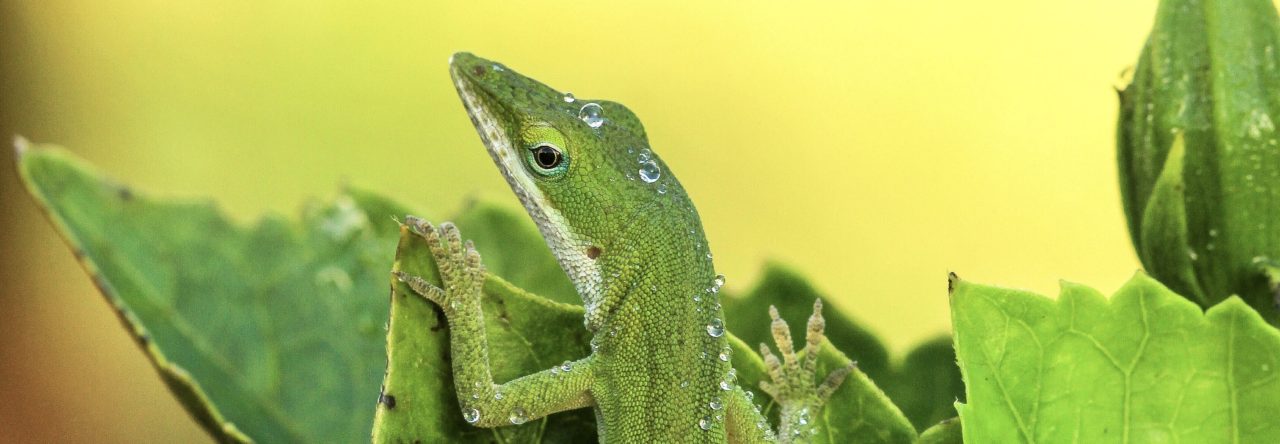Whereas in the Greater Antilles islands anoles evolved ecomorphs and live in communities with up to 11 species in sympatry, islands in the Lesser Antilles support only one or two species each. However, islands such as Dominica have populations of anoles that experience selective pressures resulting in different ecotypes.
While Dominica is relatively small, the mountainous topology results in highly variable environmental conditions across the island with cool mountainous regions and warm coastal regions and thermal vents. The single endemic anole species present on the island, Anolis oculatus, exhibits four morphologically distinct ecotypes (Montane, Atlantic, North Caribbean and South Caribbean) and despite levels of gene flow between these ecotypes are high, adaptive differentiation in this system is maintained.
Tricia Neptune, a graduate student in the Watson lab, at Midwestern State University, explored whether these ecotypes also show any differences in metabolic rate (by measuring oxygen consumption) and its sensitivity to temperature (Q10) at ecologically-relevant temperatures.
Results show that size differences between ecotypes are reflected in their physiology with the south Caribbean ecotype exhibiting higher oxygen consumption and Q10 compared to the other three ecotypes. Tricia hypothesize that these differences in metabolism and temperature sensitivity are in part responsible for maintaining relaxed geographic segregation among ecotypes.
Tricia plans to incorporate data on sprint speed, bite force as well as investigate thermoregulation strategies in this species. It will also be interesting to see a comparative study between the A. oculatus ecotypes and the introduced Puerto Rican crested anole, A. cristatellus.
Figure from Thorpe et al. 2004














